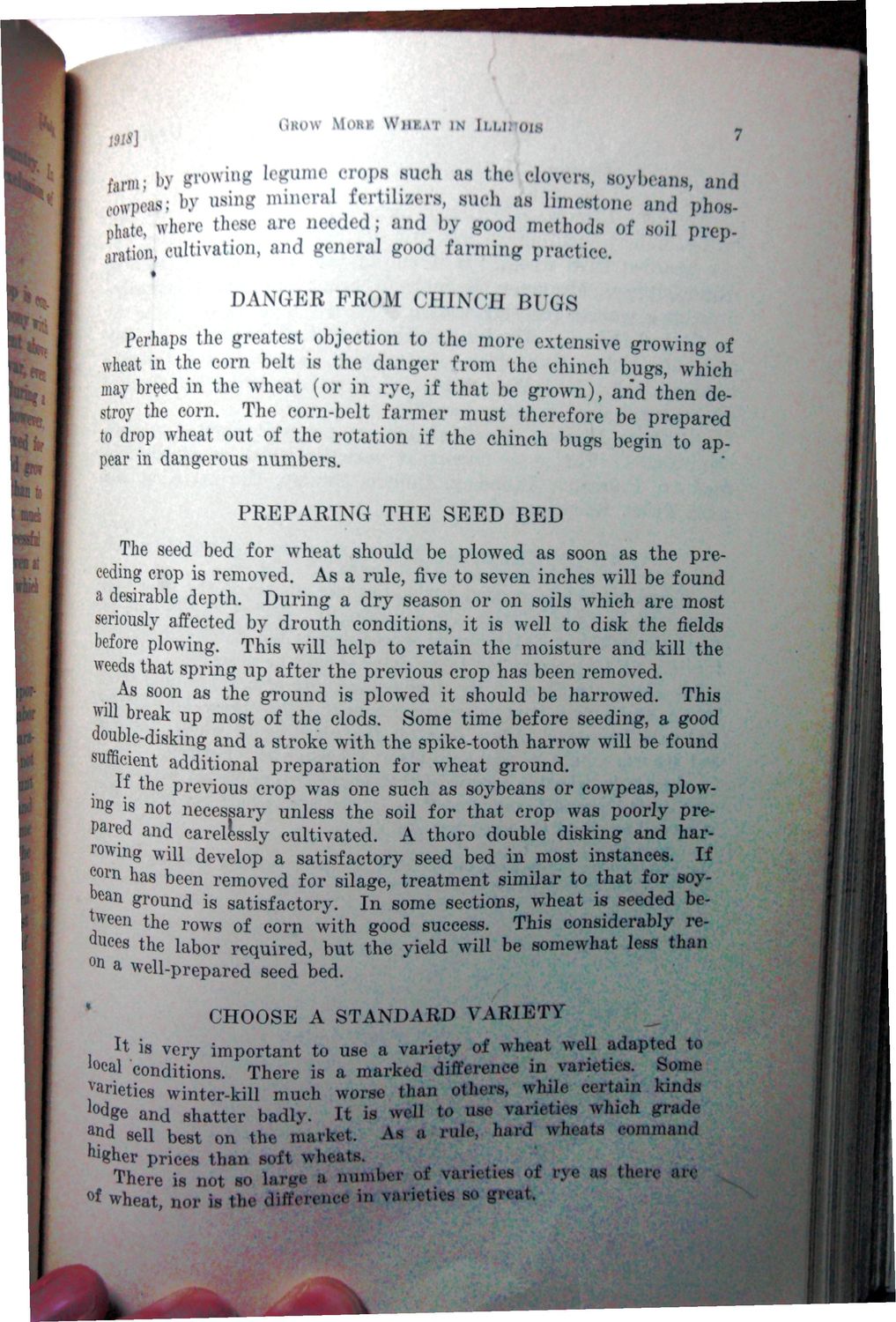| |
| |
Caption: War Publications - WWI Compilation 1923 - Article 30
This is a reduced-resolution page image for fast online browsing.

EXTRACTED TEXT FROM PAGE:
(iK«>n M.'KI \\ ntAT IN liM. m s - 1918) < firm; by gWWfog !<gume crops Midi as the olovcrs, soybean!, and ,iwj)oas: hy usinir mineral I'erl ilizers, such as limestone and phot(,li;lt(., where these are needed; and hy ^,,,,,1 methods of soil prep. .nation, cultivation, and general fr<HH 1 farming praetiee. DANGKM PROM CJI1NCJ1 BUGS Perhaps the greatest objection to the more extensive growing of wheat in the corn belt is the danger from the chinch bugs, which may breed in the wheat (or in rye, if that be grown), and then destroy the corn. The corn-belt fanner must therefore be prepared to drop wheat out of the rotation if the chinch bugs begin to appear in dangerous numbers. PREPARING THE SEED BED The seed bed for wheat should be plowed as soon as the preceding crop is removed. As a rule, five to seven inches will be found a desirable depth. During a dry season or on soils which are most seriously affected by drouth conditions, it is well to disk the fields before plowing. This will help to retain the moisture and kill the weeds that spring up after the previous crop has been removed. As soon as the ground is plowed it should be harrowed. This will break up most of the clods. Some time before seeding, a good double-disking and a stroke with the spike-tooth harrow will be found sufficient additional preparation for wheat ground. If the previous crop was one such as soybeans or cowpeas, plowm g is not necessary unless the soil for that crop was poorly prepared and carelessly cultivated. A thoro double disking and harrowing will develop a satisfactory seed bed in most instances. If £°m has been removed for silage, treatment similar to that for soybean ground is satisfactory. In some sections, wheat is seeded between the rows of corn with good success. This considerably recces the labor required, but the yield will be somewhat leas than n ° a well-prepared seed bed. CHOOSE A STANDARD VARIETY It is very important to use a variety of wJrtafl well adapted to loc al conditions. There is a marked difference in varieties. Som< v *rieties winter-kill much worse than other* while certain kinds 1( %e and shatter badly. It is well to w* varieties which grade a *d sell best on the market. As a rule hard wheats sonunand higher prices than soft wheats. There is not so Larue a number of vanetn of rye there arc °f wheat, nor n the difference in varieties it •
| |